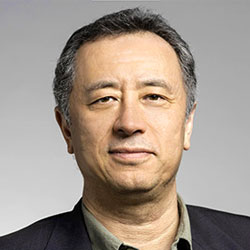
About
Matthew A. Wilson received his Ph.D. in Computational and Neural Systems from the California Institute of Technology and completed his postdoctoral training at the University of Arizona. In 1994, he joined the faculty of the Department of Brain and Cognitive Sciences and the Picower Institute for Learning and Memory at MIT.
Research
Our laboratory studies the neural processes within the hippocampus and neocortex that enable memories to form and persist over long periods of time. We use a technique that allows us to simultaneously record the activity of hundreds of individual neurons across multiple brain regions in freely behaving animals. When combined with genetic, pharmacological, and behavioral manipulations, these recordings allow us to gain a mechanistic understanding of how animals learn and remember.
Currently, an important focus of our laboratory is the reactivation of sequential activity in neural ensembles during waking and sleep. Because many cells in the hippocampus represent specific locations, we can use their firing patterns to reconstruct movement trajectories that are being "replayed" during periods of rest. The function of such replay is not well understood, but it may play a role in memory consolidation, or even in action planning. We also study the interplay between the hippocampus and other brain regions, such as prefrontal cortex, cingulate cortex, thalamus, and the ventral tegmental area. Understanding how activity is coordinated between multiple areas is likely to be crucial for understanding how memories are stored and retrieved.
The members of our laboratory have always been committed to methodological innovations. Recent advancements include motorized microdrives for improving tetrode yield and stability, the ArtE system for real-time feedback during experiments, and new computational tools for the analysis of neural activity.
Taken together, these approaches contribute to the overall research objective: to understand the link between neural ensemble representations and cognitive capabilities.
Teaching
9.011 Systems neuroscience
9.17 Systems Neuroscience Laboratory
Publications
Sanders, H., Ji, D., Sasaki, T., Leutgeb, J.K., Wilson, M.A., and Lisman, J.E. (2019). Temporal coding and rate remapping: Representation of nonspatial information in the hippocampus. Hippocampus 29, 111–127.
Flores, F.J., Hartnack, K.E., Fath, A.B., Kim, S.-E., Wilson, M.A., Brown, E.N., and Purdon, P.L. (2017). Thalamocortical synchronization during induction and emergence from propofol-induced unconsciousness. Proc Natl Acad Sci U S A 114, E6660–E6668.
Penagos, H., Varela, C., and Wilson, M.A. (2017). Oscillations, neural computations and learning during wake and sleep. Curr Opin Neurobiol 44, 193–201.
Muindi, F., Kenny, J.D., Taylor, N.E., Solt, K., Wilson, M.A., Brown, E.N., and Van Dort, C.J. (2016). Electrical stimulation of the parabrachial nucleus induces reanimation from isoflurane general anesthesia. Behav Brain Res 306, 20–25.
Varela, C., Weiss, S., Meyer, R., Halassa, M., Biedenkapp, J., Wilson, M.A., Goosens, K.A., and Bendor, D. (2016). Tracking the Time-Dependent Role of the Hippocampus in Memory Recall Using DREADDs. PLoS One 11, e0154374.

